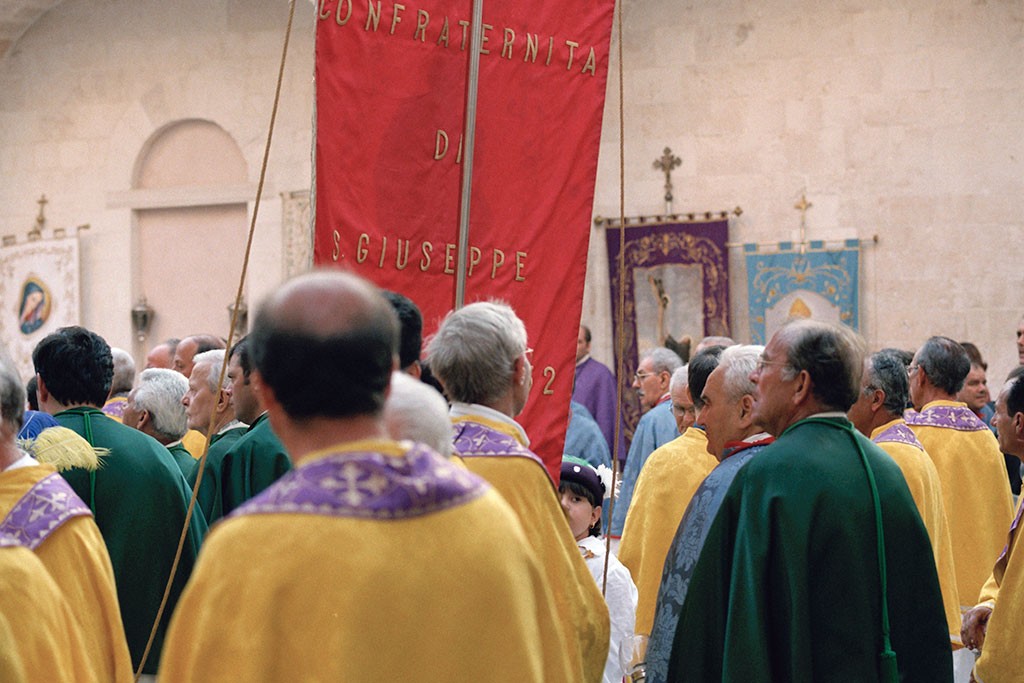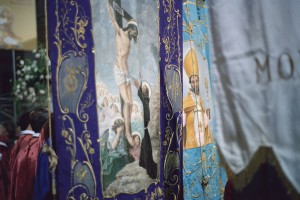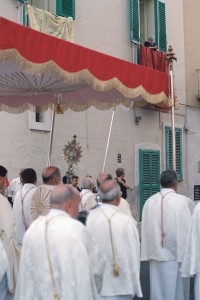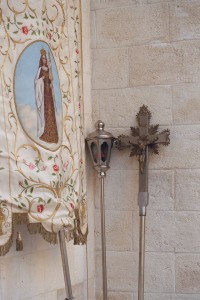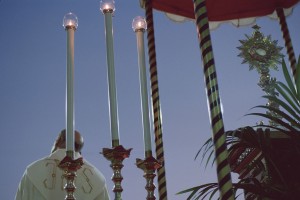An ancient cult
The solemnity of Corpus Domini, better called solemnity of the holy “body and blood of Christ”, is one of the main solemn rituals of the liturgical year for the Catholic Church. It is celebrated on the Thursday following the solemnity of the Most Holy Trinity or on the ninth Sunday after Easter.
In the ancient “Capituli della confrarerìa del corpo di Christo” (the local congregation of the Saint), it is possible to discover how the local Church was already keen to venerate the Body of Christ since the early years of the sixteenth century. The current public rituals still offer the occasion for thinking over values and meaning between the Eucharist and our everyday lives.
A solemn procession
Up to now it is one of the most important local liturgical feasts. In fact, in the presence of the bishop, confraternities and parishes everything is dominated by the sacred symbol of the consecrated host displayed for public adoration. This represents the need of the community to share the faith in the presence of the Saviour in the Eucharist. The Elevation of the Host during the mass and the blessing by the priest are the main moments, and are filled with faith which is felt with great intensity and ardour, where the congregation can feel direct contact with God. The procession starts from the cathedral and goes through the main streets of the town. According to a historical ritual, the organization of the solemn ceremony is assigned to the confraternity of Santissimo Sacramento, known as the congregation of the Madonna della Madia.
Decorated balconies
For the occasion, the balconies are decorated with coloured drapes and embroidered sheets and rose and flower petals are sprinkled around. The children who have received the Sacrament of the First Communion in previous weeks also participate. In the past, monks and people wore sumptuous and elegant clothes and strolled through the streets of the town in the procession rich in ornamental and liturgical elements. All the parishes took part in the procession and citizens were happy to help clean the streets. Songs, prayers and Eucharistic chants were repeatedly rehearsed and recited in the presence of the bishop, up to the moment of Communion, the climax of the ceremony.
